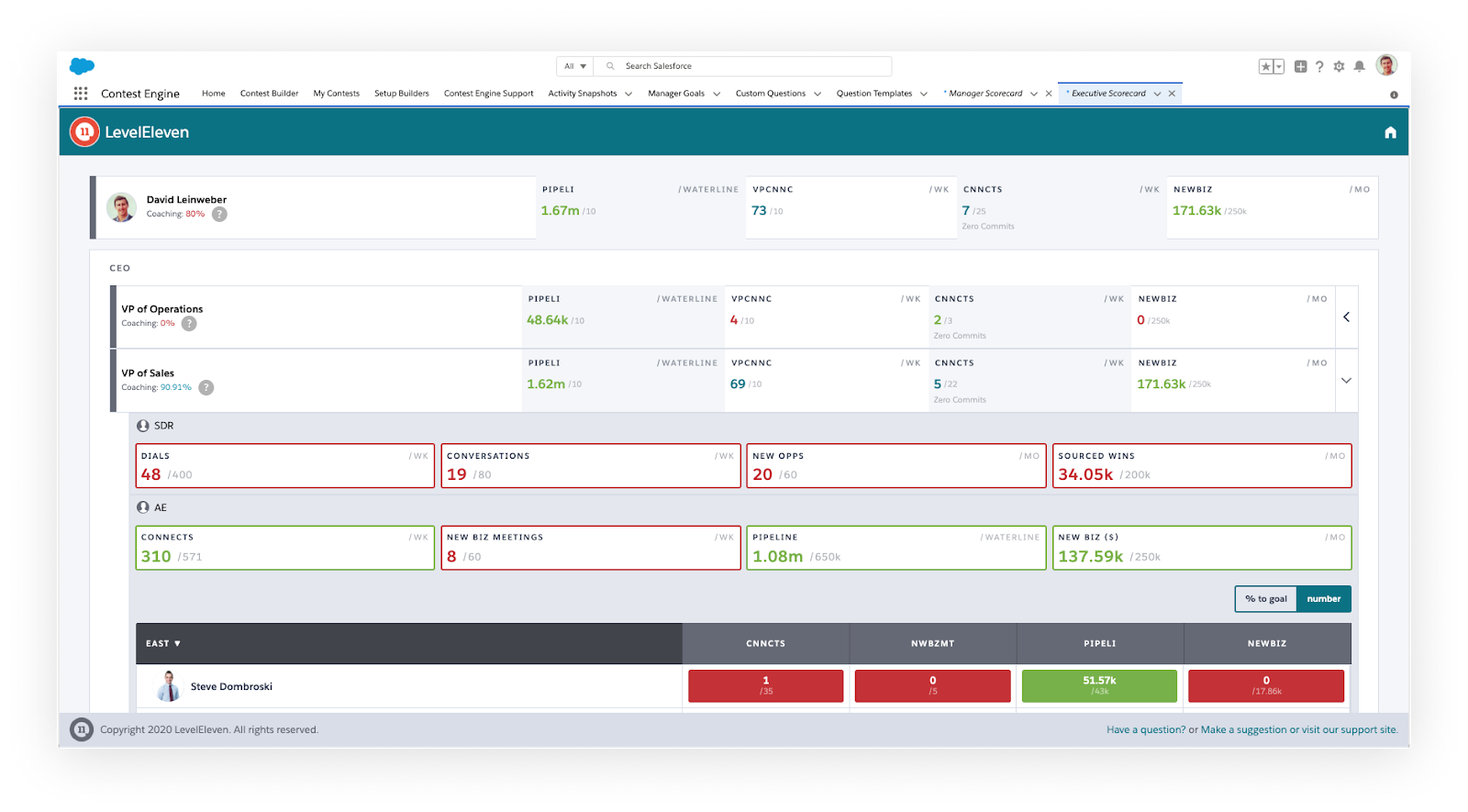A study done by Harvard professors Michael Porter and Nitin Nohria tracked how 27 CEOs of companies with an average annual revenue of $13.1 billion spent their days. The results? Time is the scarcest resource for executives. With an average workweek of 62.5 hours, there still isn’t enough time in the day. LevelEleven developed Executive Scorecard to solve this exact problem; too much data and not enough time. We are about to show you the strategies and tools that solve four of the common problems for executives (Forbes Expert Panel), as well as how to quickly weed through your organization’s data to get to the information that matters.
1. Sorting Through Too Much Data
Executives are long past the days of worrying about a singular team. They often have different divisions, tiers, regions, and roles who all work towards the individual metrics. Executive Scorecard Hierarchies allow executives to understand at a glance understand how each individual team is measuring up to the executives’ chosen metrics. If a team is behind or ahead, executives are able to quickly drill down and see what metrics the team is measuring against and how they’re performing towards additional goals set by the executives.
2. Building a Strong Management Team
Do you know what your managers are doing on a daily basis? Are they having regular one-on-ones with their team, emphasizing the activities that matter, and making enough of an impact on their team? With Executive Scorecard, executives are able to see if their managers are reaching their coaching goals as a percentage. Is one manager not coaching their team? An executive can easily see this and drill down to see if it’s affecting team performance. From there, they can coach their managers and help them help their individual team. This method of coaching downward allows executives to keep their data high-level and useful while also ensuring their management team is using the LevelEleven coaching platform.
3. Dealing With a Lack of Time
Executive-level may be one of the most pressed for time positions there is in any organization. Here at LevelEleven, we understand that. Executives don’t have time to wait for weekly performance reports – you need data right now. That is where Executive Scorecard comes in, pulling real-time data from your Salesforce Org. Executives are also able to see how their entire organization is performing against the four metrics they specifically care about. From there, you can create an educated action plan to help drive activity from the top down.
4. Organizational Strategy
Executives often have many different teams that report to them. Whether they are separated geographically, by role, or by other means it can be hard to create a strategy for the entire organization. Executive Scorecard can compare the metrics that are most important to an executive to the metrics a team is already measuring. This allows an executive to see what the successful teams are doing that’s working, allowing them to strategize with managers for other teams or divisions to do the same.
Executives are busier than ever and are often drowning in endless data and statistics that are almost always a week or so behind what’s actually happening. Executive Scorecard allows C-level employees to gain easy visibility into their organization in real-time, directly from Salesforce.


